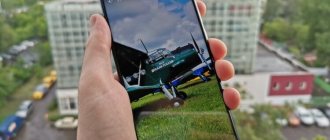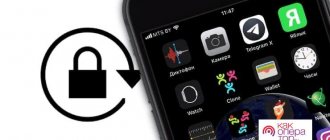There are situations when the display sensor may stray from its initial state. After this, the screen does not accurately determine the location of the tactile touch. Owners of devices running Android OS need to know how to adjust the sensitivity of the touch screen. This article will describe the entire procedure in detail. In general, this process consists of reconfiguring the device screen to accurately determine the location of the touch. This is the very first stage for comfortable use of a smartphone. If you neglect this setting, then in the future you can get a bunch of errors and malfunctions (most often this factor is expressed in communication via SMS and in working with applications).
Horizontal calibration
The above concept refers to the adjustment of the position sensor in space to adjust the line of the horizontal plane of the smartphone. This will further improve the clarity of recognition of all movements. In the menu that appears, at the very end of the list, find the “Horizontal calibration” section. Having found the item of interest, follow the instructions of the smartphone exactly.
You need to place the smartphone on a horizontal plane and then select the required function, then the utility will adjust the sensitivity of the touch screen itself. The end result of the setup is a completion notification that appears on the display.
How to set up the accelerometer or G-sensor
Also, all modern devices have an accelerometer, which determines the position of the phone relative to a flat horizontal and vertical surface. This feature is used in many games, most often racing games where you control the car by turning your phone, and in some other applications.
Through a special application - GPS us & Toolbox
You can calibrate the G-sensor using a free application from the Play Market:
Install the GPS us & Toolbox application from the Play Market.
Click on the “Tools” button
Select the section “Accelerometer calibration”
Click on the “Calibrate” button
Notification about successful accelerometer calibration
Via Engineering
There is a second way to calibrate the G-sensor - through Engineering:
Dial one of the special codes in the place where you usually enter phone numbers - *#*#3646633#*#*, *#*#4636#*#* or *#15963#*.
Enter the special code and add *
Go to the Hardware Testing section
Go to the Sensor section
Go to the Sensor Celibration section
Press the Gsensor Celibration button
Press the “Back” button several times to exit the engineering menu
Video: setting up the G-sensor on Android
Gyro Sensor Calibration
The next level of adjustment is adjusting the gyroscope.
This is a device designed for navigation. It is required to determine the spatial position of the device. It responds promptly to changes in position in space. For example, when rotating a smartphone in different projections, the device adapts the picture shown on the screen in accordance with the position of the phone. The setup of this sensor is in all respects similar to the horizontal setup described earlier, so there should not be any particular difficulties. To do this you will need:
- Go to the "Settings" section.
- Find the "Display" category.
- In the menu that opens, click on “Gyro sensor calibration”.
- After completing the above steps, we can say with confidence that the sensitivity of the Android touch screen has been adjusted.
If your smartphone does not have system calibration settings, you can download the Touchscreen Calibration application, which will help with screen calibration.
We solve software problems
Let's consider the most effective ways to solve the problem. Before we begin troubleshooting other problems, reboot the phone:
- Press and hold the Power key. The screen should turn black.
- After 1 minute, press the power key again to turn on the device. Often, after a reboot, the gadget will respond normally to touch.
- Remove the SIM card and memory card. In some cases, it is the SIM card that causes the problem.
- Reboot the device and check if the screen sensor is working.
- We put the device into safe mode.
In safe mode, third-party software is disabled and only standard utilities will function. If the display functions normally in safe mode, then you need to remove programs, especially recently installed ones.
Latest solution - Hard Reset
When we have nothing else to think about and cannot think of any other solution, Hard Reset is what we need before contacting technical support. To delete all data from Samsung mobile phones, we need to extract our photos, videos or files in advance if we do not want to lose them, make sure that our battery is at least 50% charged, or connect it to the charger and follow these steps :
- We turn off our Samsung Galaxy by holding down the Power button and pressing the Power button.
- Then we press the power button at the same time and increase the volume at the same time for a few seconds until we see the Android logo. (Some models with Bixby button must press and hold Power + Bixby + Volume Up button)
- In the following steps we navigate with the Volume Up and Down keys, taking over the Power button.
- Now let's go to "Wipe Data/Factory Reset" and accept using the Power button.
- Then we go to Yes and accept.
- Finally we select “Reboot system now”.
Now all we have to do is reconfigure our mobile and check if the problems with the screen have disappeared.
Why did the sensitivity/response of the screen to actions disappear?
Causes of failure
There are many reasons why your phone's display stops working. Let's look at the most common types of problems:
p, blockquote 19,0,0,0,0 ->
- Physical breakdown, damage to the phone's sensor. The cause of failure may be exposure to a magnet, humidity, cold, elevated temperature or static electricity.
- The Android OS malfunctions after an incorrect reboot, firmware update, or insufficient internal or RAM memory.
- Exposure to viruses that significantly reduce performance. They affect the gadget in such a way that the sensor loses sensitivity. To resolve the issue, it is recommended to use antivirus software. Read How to check Android for viruses through a computer (PC).
- Incorrect settings.
p, blockquote 20,0,0,0,0 ->
Resetting to factory settings will return the settings to default, which will eliminate almost all of the problems listed above. If sensitivity disappears without a specific reason, then this problem is related to the operation of the software.
p, blockquote 21,0,0,0,0 ->
What is a cellular signal?
The principle of operation of cellular communications is quite simple: there is an operator’s base station and your phone, a radio frequency channel is organized between them, through which SMS messages are transmitted, calls are made, and Internet data is exchanged.
There are several cellular communication standards, differing in the method of signal transmission and frequency. As a rule, base stations are built at higher elevations in order to provide maximum coverage area. However, there is no escape from the obstacles that prevent the signal from passing through. These can be walls, trees, and other obstacles, upon contact with which the signal weakens.
It is clear that in open areas where high-rise buildings do not abound, the coverage area will be higher. For example, for stations operating according to the GSM-900 standard, in this case the zone is no more than 30,000 kilometers. In urban areas, the figure decreases to 7 kilometers. Stations with more advanced communication standards such as 3 G and LTE cover an area half the diameter.
Why do we have a weak phone signal?
Due to the above-mentioned obstacles, so-called dead zones or holes in the coating may form. That is, places where the signal is weak, unstable or completely absent. Where you most often encounter poor signal levels on your phone:
- places located at a significant distance from the nearest station (there is simply no coverage);
- basements, underground parking lots, lowlands (the signal simply cannot penetrate here);
- hills, skyscrapers (often “going higher” does not necessarily mean the presence of a signal - above the 12-14th floor there is often no signal at all);
- buildings made of metal structures that do not transmit signals.
However, obstacles and distance from the station are not always the reason for the lack of signal. Often the cause is the user's phone. You've probably been in situations where a friend has a cellular signal, but you don't.
And this is despite the fact that you are using the services of one operator. There are common cases when two identical phones have different signal levels. There can be many reasons:
- a phone in a metal case or in a metal case can catch the network much worse than a plastic device;
- quite often, no matter how surprising it may sound to you, the cause is the “clumsy” phone firmware;
- damage to any components as a result of falls, immersion in water, etc.;
- The phone may have a defective antenna from the factory, which is especially common among Chinese manufacturers of inexpensive models.
How to boost your phone signal with your own hands?
Well, we've covered the theory, let's move on to practice. We will look at several ways to boost a cellular signal, from the simplest to the rather complex and expensive.
The reason is in the firmware
It's worth starting by checking that the software is working correctly before trying to get to the inside of the phone. Hundreds of users are experiencing deterioration in the communication signal that appears after flashing, so it’s worth paying attention.
We have already written about flashing a smartphone to Android, so we won’t repeat it. Firmware is a fairly simple process, but with its own nuances. The main thing is to remember to make backup copies of important files.
If the flashing helped, then we congratulate you, but if the phone still has poor network reception, then move on to the next point.
The signal is poorly received due to damage to the phone
As already noted, often the phone does not receive a signal well after it accidentally fell on a tile or plunged into the sea. In this case, the average user has no choice but to go to a service center.
Modern phones are quite complex devices, so for most people it is not possible to identify the source of the problem on their own. It is likely that specialists will detect damage and carry out the necessary work so that your phone can once again cope with searching for a network without any problems.
How to boost your phone signal with your own hands
In most cases, the reason for a weak cellular signal lies in a defect in the antenna, which, in fact, is responsible for this function. Often, owners of inexpensive smartphones from the Middle Kingdom are faced with the fact that the manufacturer has cheated a little by not tightly connecting the antenna to the device’s motherboard. You can correct the mistake yourself, but you need to at least understand a little about how the phone works. Otherwise, contact the service center with a description of the problem.
So, we will assume that you are already armed with a screwdriver and are ready to strengthen the phone signal with your own hands.
- Nowadays, smartphones come in a variety of designs, which is why they are disassembled in different ways; It’s easiest to get to the insides of a phone with a removable cover and battery, but it’s more difficult when the smartphone is non-separable;
Take your time . Before you start disassembling, find a video or text material on the Internet that will show and tell you how to disassemble your specific device and what you should pay attention to.
Please also note:
disassembling your smartphone will void your warranty.
- as a rule, the antenna is hidden in the lower or upper part of the case, represented by small copper strips (again, for the location of the antenna specifically in your model, see the relevant materials);
- after you get to the board, you will find several spring contacts that should fit tightly to the cable located on the back of the structure;
- if the spring contacts of the motherboard do not fit well to the cable, carefully straighten them using, for example, tweezers;
- We collect the phone and enjoy a good network signal.
We connect a homemade antenna to the phone to strengthen the signal
The methods discussed above only work if the problem lies with your phone. But, as we noted at the beginning of the material, the cause of a bad signal can be various kinds of obstacles or a significant distance from the station. In this case, you can try to strengthen the antenna of our device with just a piece of wire.
Let us immediately note that this method is not suitable for all phones. The fact is that to implement it you will need a special diagnostic port, which is difficult to get to in a modern non-separable smartphone (in a number of models it cannot be found at all). It looks like a small round connector of golden color.
take a small piece of thin insulated wire;
insert into the connector;
Place it in such a way that it does not interfere with other components or the closing of the lid.
Everything, as practice shows, the phone network signal is greatly enhanced. Isn't it surprising?!
Some users inserted a piece of wire into the 3.5 mm port (under headphones). Sometimes this works too.
Sticker sticker or foil to boost phone signal
In the vastness of foreign online stores, it will not be difficult to find a bunch of different devices for amplifying the signal. Among them, a small sticker sticker is popular, consisting of several metal tracks, which, according to the manufacturer, allow you to get rid of interference.
Similar stripes can be seen in some smartphones by default, so the “magical” properties of the sticker have a right to life.
However, according to a considerable number of users, a piece of ordinary foil will help to achieve a slight improvement in the signal. It is located under the phone cover, closer to the antenna. The method is not complicated, so you can try it.
Strengthening communications using a repeater
In some cases, when the signal cannot be amplified by any of the methods (the walls of the room are too thick, the distance from the base station), they resort to the use of special antennas or repeaters. Such devices are capable of significantly amplifying the signal, but their cost often deters potential buyers.
2017 Sunhans 790-2700MHz 15dBi 3g 4G Omnidirectional Fiberglass Antenna for GSM CDMA WCDMA.
2014 Sunhans 690-2700MHz 10dBi Omnidirectional Fiberglass Antenna for 3G 4G GSM CDMA WCDMA.
1 PC. 5000 square meters suitable 3W (35dBm) GSM output power.
You can build something similar with your own hands, but often it does not enhance the signal at all or does it very, very poorly.
For example, some people use the following method:
- take a metal rod (50 cm is enough), a coaxial cable, a piece of foil (about 10x4 cm) and plywood or plastic;
- we bend the metal rod so that we get a diamond-shaped structure;
- glue the foil to the plywood;
- We connect the metal rhombus and the foil using a coaxial cable (solder);
- We lift the end on which the diamond is located higher, the other, with foil, is left below;
- We bring the phone to the foil to check the signal quality.
You will probably need to find the most suitable location for the resulting structure to pick up the signal.
It is clear that such an amplifier is unlikely to provide communications to a large company that is not lucky enough to have an office in an area without network coverage. Here you will have to turn to specialists for help. Today, many companies provide similar services, and will not only offer modern equipment, but will also handle installation.
By the way, you shouldn’t skimp on specialists - for installation, workers use special devices that help determine the most suitable location, select frequencies, etc. An ordinary user, of course, will find it difficult to cope with such a task.
Take my many years of experience as a gift - the book “Car sales through a blog”
How to strengthen the cellular signal on your phone with your own hands
Do you want to know how to consistently earn money online from 500 rubles a day? Download my free book =>> “How to guarantee earning from 500 rubles a day”
Dense urban development, terrain, power lines and distance from transmission towers greatly affect the quality of signal reception, which can disappear at the most inopportune moment.











